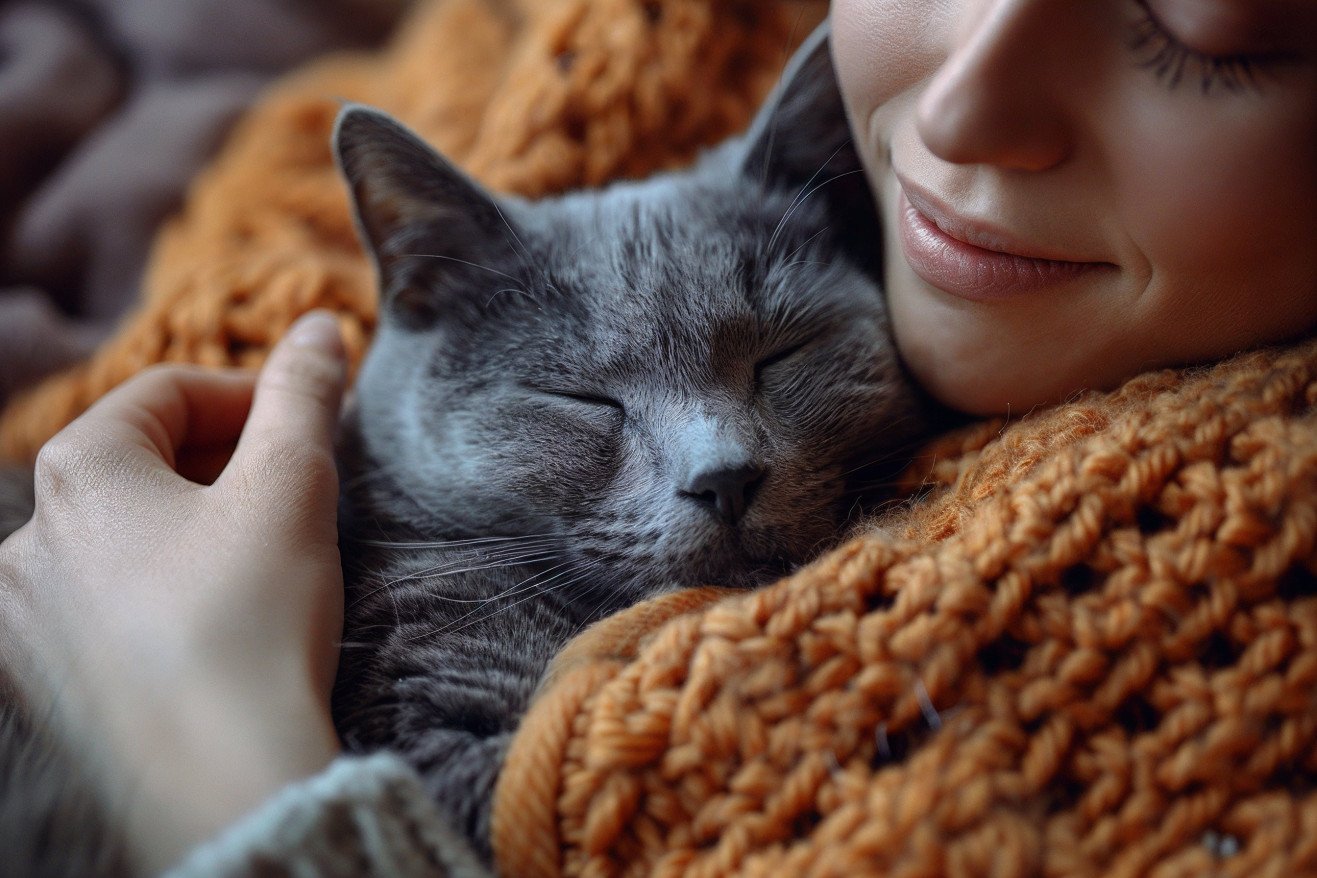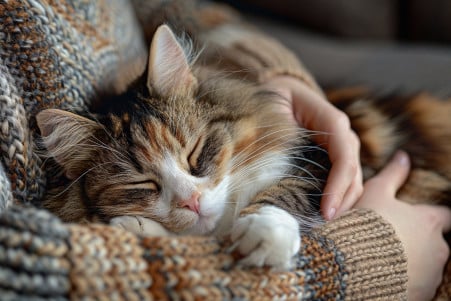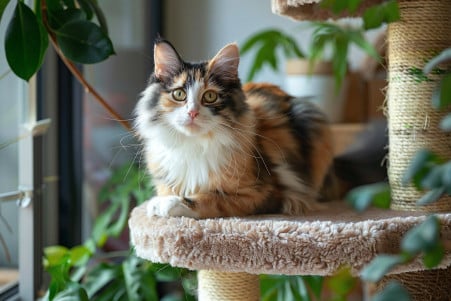How to Help Your Cat Through Her Heat Cycle: Expert Tips and Insights
29 February 2024 • Updated 27 February 2024

If you’re a cat owner, you’ve probably noticed that when your cat goes into heat, her behavior changes. There are several ways to help a cat in heat, including giving her extra attention, making sure she feels safe and secure, and playing with her.
You can also use a heating pad and catnip to help her feel better. However, it’s important to make sure she stays inside so she doesn’t mate. The only way to guarantee that your cat won’t go into heat is to have her spayed.
In the sections below, we will review veterinary science, animal behavior, and feline ethology literature to create a comprehensive guide that will help you support your cat during her heat cycle.
These studies will delve into the physiological, psychological, and environmental factors that contribute to a cat’s heat cycle, and help us understand the best ways to help and care for her. By learning about these factors, you’ll be able to make sure that your cat is safe and healthy during this time of year.
How can you help a cat through her heat cycle?
Recognizing the Symptoms of Feline Heat
There are several symptoms that are associated with a cat in heat, and they are both physical and behavioral. According to The Spruce Pets, behavioral signs include an increase in vocalization, which can be anything from attention-seeking meows to yowling, and an increase in affection. Other behaviors include restlessness, the lordosis position (which is when a cat arches its back and raises its hindquarters), and a decrease in appetite.
Unlike cats, humans and dogs have reproductive cycles that include menstruation, but cats do not menstruate. If you see any blood in your cat’s vaginal area, it’s a sign that something is wrong. The Spruce Pets says that if you see this, you should take your cat to the vet immediately, as this could be a sign of an infection.
Cats usually go into their first heat when they are between 4 and 12 months old, and the frequency of their heat cycles can be impacted by a number of factors, including breed, environment, and individual differences.
PDSA explains that short-haired cats are more likely to have their first season earlier than long-haired cats, and while the frequency of heat cycles may decrease with age, cats will continue to have them until they are spayed.
It’s important to be able to recognize these symptoms so that you can make sure to give your cat the care and attention she needs during this time.
How to Help Cats in Heat
When your cat is in heat, it’s important to take steps to help her deal with her increased arousal and restlessness. According to Wedgewood Pharmacy, one of the best things you can do for your cat is to make sure she has a warm, private space.
You can do this by placing a heated pad in a quiet area of your home. You can also help your cat by playing with her to help her redirect her energy from her heat cycle.
You can also help your cat by using herbal remedies like catnip, in moderation, to help calm her down. According to The Spruce Pets, it’s important to make sure your cat has a stimulating environment with safe toys and interactive play to help keep her mind off her instincts. Not only does this help reassure your cat, but it also helps prevent the stress and anxiety that can come with her natural urges.
To help ensure that your cat doesn’t escape and mate with a male cat, PDSA recommends keeping your cat indoors. However, you can help your cat feel more comfortable with this by playing calming music or using pheromone diffusers to help create a calm environment. Pheromone diffusers release synthetic versions of the natural pheromones that cats produce, which can help reduce stress and increase your cat’s sense of security.
By carefully managing your cat’s environment and behavior when she’s in heat, you can help her and make sure you’re prepared for any medical interventions that may be necessary for her health.
Hormonal Treatments for Cats in Heat
If you want to help manage the behaviors that come with your cat’s heat cycle, hormonal treatments are a medical option that can provide short-term relief.
Synthetic progestins, like megestrol acetate, can be used to delay estrus in cats, which can give you more time to schedule a spay. Maddie’s Fund notes that megestrol acetate can be given in low doses to effectively stop estrus in cats, which ensures the best balance between effectiveness and the potential for side effects.
That said, there are risks associated with hormonal treatments. VCA Hospitals explains that cats can experience side effects that range from increased appetite to extreme lethargy, and in some cases, liver toxicity.
This is why it’s so important to work with a vet to determine if this is the right option for your cat. A vet can make sure that the dose is being administered in a way that’s safe and healthy for your cat.
While medical interventions can be helpful, it’s important to remember that they are not permanent. Before you decide to use one of these treatments, it’s important to weigh the potential benefits against the potential risks, and remember that spaying is the only way to permanently stop your cat from going into heat.
The Permanent Solution: Why Spaying Is the Best Option
While there are many ways to help your cat deal with her heat, spaying is the most permanent and beneficial solution. Spaying, or ovariohysterectomy, is a surgical procedure that removes a female cat’s ovaries and uterus. If you have your cat spayed before her first heat, which is generally recommended at around 4 to 6 months of age, you can prevent future heat cycles and the behaviors that come with them.
The benefits of spaying go beyond the convenience of preventing future heat cycles. According to PDSA, spaying your cat can significantly reduce the risk of mammary tumors, ovarian and uterine cancers, and pyometra, a life-threatening uterine infection. These health benefits make it important to think about spaying in terms of managing your cat’s behavior and ensuring she has a long and healthy life.
In addition, many cat owners worry about the safety and effects of spaying their pets. However, as The Spruce Pets explains, spaying is a common and safe procedure performed by veterinarians around the world. Not only does it help prevent unwanted litters, but it also ensures a life free from the stress of heat for both you and your cat.
Because of these benefits and the peace of mind it provides, spaying is the responsible choice for pet owners.
Using Pheromones to Help Your Cat During Heat
Pheromone therapy has become a game-changing, non-invasive way to help cats deal with stress and behavior issues during their heat cycle. In these cases, manufacturers have created synthetic versions of feline facial pheromones, like the F3 analogue in products like Feliway, to help cats feel more comfortable by recreating the pheromones they naturally leave in their environment.
A study in Veterinary Evidence even found that these pheromones can reduce signs of acute stress in clinical veterinary settings, which could be helpful for cats in heat.
Environmental enrichment is also important when it comes to helping a cat in heat. This can be as simple as adding new toys, scratching posts, or even rearranging furniture to encourage exploration. A study in PMC even found that the Feliway Classic Diffuser significantly reduced unwanted scratching in cats, which could help with the restlessness and irritability that comes with heat.
By using pheromone products and environmental enrichment together, you can take a more well-rounded approach to helping your cat. This will help create a more balanced environment for our feline friends during this time of natural stress and help make the heat cycle easier for them to handle.
How to Help Your Cat Through Heat
Learning how to help your cat through heat is a matter of understanding and patience. As we’ve seen, this includes recognizing the signs—increased vocalization, affectionate behavior, restlessness, and the lordosis position—and knowing when your cat is in heat. You can help your cat through this time by making sure she feels safe and secure and by providing her with warmth, play, and possibly herbal remedies.
We’ve also seen the importance of keeping your cat indoors to prevent unwanted pregnancies and the possibility of using medical treatments, including hormones, to manage heat cycles. However, it’s important to note that these treatments should only be used under the supervision of a veterinarian and with caution due to the potential for side effects.
In the end, spaying your cat is the best way to prevent the heat cycle and its associated behaviors and to provide the health benefits that come with the procedure, and it’s the most responsible and effective long-term solution.
As pet parents, it’s our responsibility to make sure we’re taking the best care of our cats by using evidence-based practices. By learning how to recognize and meet your cat’s needs during her heat cycles, you can help her live a happier, healthier life.


